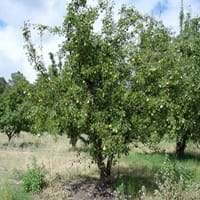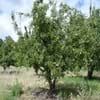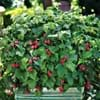Life Span
Perennial
Perennial
Origin
Europe, Western Asia
Asia, Europe, North America
Types
pride pear,Triumph pear,jersey pear
Black Ash, Blue Ash, California Ash, Carolina Ash, European Ash
Number of Varieties
Not Available
Habitat
Hedge, Wood Margins
Forest edges, Hillside, Woods
USDA Hardiness Zone
5-9
3-9
Sunset Zone
2a, 2b, 3a, 3b, 4, 5, 6, 7, 8, 9, 14, 15, 16, 17, 18
9, 12, 13, 14, 15, 16, 17, 18, 19, 20, 21, 22, 23, 24
Habit
Oval or Rounded
Oval or Rounded
Flower Color Modifier
Bicolor
Not Available
Fruit Color
White, Yellow, Red, Green, Yellow green
Not Available
Leaf Color in Spring
Dark Green
Dark Green
Leaf Color in Summer
Dark Green
Dark Green
Leaf Color in Fall
Purple, Dark Green, Burgundy
Dark Green
Leaf Color in Winter
Light Green
Dark Green
Leaf Shape
Lance shaped
Oblovate
Plant Season
Spring, Summer, Fall
All year
Sunlight
Full Sun
Full Sun, Part sun
Type of Soil
Loam
Loamy, Sandy
The pH of Soil
Neutral
Acidic
Soil Drainage
Well drained
Well drained
Bloom Time
Spring
Late Spring, Spring
Tolerances
Drought
Drought, Pollution, Soil Compaction
Where to Plant?
Ground
Ground
How to Plant?
Budding, Grafting, Seedlings
Grafting, Seedlings, Stem Planting, Transplanting
Plant Maintenance
Medium
Medium
Watering Requirements
Requires regular watering
Does not require lot of watering, Medium, Prefer drip-irrigation instead of Over-head watering
In Summer
Lots of watering
Lots of watering
In Spring
Moderate
Moderate
In Winter
Average Water
Average Water
Soil Type
Loam
Loamy, Sandy
Soil Drainage Capacity
Well drained
Well drained
Sun Exposure
Full Sun
Full Sun, Part sun
Pruning
Remove damaged leaves, Remove dead branches, Remove dead leaves
Prune in winter, Prune prior to new growth
Fertilizers
All-Purpose Liquid Fertilizer
All-Purpose Liquid Fertilizer
Pests and Diseases
Aphids, Caterpillars, codling moth
Bark splits, Crown gall, Epicormic Sprouting, Woodpecker feeding
Plant Tolerance
Drought
Drought
Flower Petal Number
Single
Single
Foliage Texture
Medium
Medium
Foliage Sheen
Glossy
Glossy
Attracts
Birds, Butterflies
Birds
Allergy
Not Available
Not Available
Aesthetic Uses
Not Available
Not Used For Aesthetic Purpose
Beauty Benefits
Not Available
Not Available
Environmental Uses
Air purification
Air purification
Medicinal Uses
Astringent, Febrifuge, Sedative
Fever, Liver problems
Part of Plant Used
Fruits
Leaves, Stem
Other Uses
Shelterbelt, Used to make yellow dye
Used as Ornamental plant
Used As Indoor Plant
No
No
Used As Outdoor Plant
Yes
Yes
Garden Design
Edible, Fruit / Fruit Tree, Topiary / Bonsai / Espalier
Shady Tree, Showy Tree
Botanical Name
PYRUS communis 'Sugar'
Fraxinus
Common Name
Dessert Pear, Pear, Sugar Pear
Ash Tree
In Hindi
Sugar pear
राख पेड़
In German
Kultur-Birne
Esche
In French
Poirier commun
Frêne
In Spanish
Pyrus communis
Fresno
In Greek
Sugar pear
δέντρο Ash
In Portuguese
Sugar pear
Freixo
In Polish
Grusza pospolita
Jesion
In Latin
Sugar pear
Fraxinum
Phylum
Magnoliophyta
Anthophyta
Class
Magnoliopsida
Magnoliopsida
Clade
Angiosperms, Eudicots, Rosids
Angiosperms, Asterids, Eudicots
Tribe
Not Available
Oleeae
Subfamily
Not Available
Not Available
Number of Species
Not Available
Season and Care of Sugar Pear and Ash Tree
Season and care of Sugar Pear and Ash Tree is important to know. While considering everything about Sugar Pear and Ash Tree Care, growing season is an essential factor. Sugar Pear season is Spring, Summer and Fall and Ash Tree season is Spring, Summer and Fall. The type of soil for Sugar Pear is Loam and for Ash Tree is Loamy, Sandy while the PH of soil for Sugar Pear is Neutral and for Ash Tree is Acidic.
Sugar Pear and Ash Tree Physical Information
Sugar Pear and Ash Tree physical information is very important for comparison. Sugar Pear height is 370.00 cm and width 300.00 cm whereas Ash Tree height is 75.00 cm and width 45.00 cm. The color specification of Sugar Pear and Ash Tree are as follows:
Sugar Pear flower color: White
Sugar Pear leaf color: Dark Green
Ash Tree flower color: White
- Ash Tree leaf color: Dark Green
Care of Sugar Pear and Ash Tree
Care of Sugar Pear and Ash Tree include pruning, fertilizers, watering etc. Sugar Pear pruning is done Remove damaged leaves, Remove dead branches and Remove dead leaves and Ash Tree pruning is done Prune in winter and Prune prior to new growth. In summer Sugar Pear needs Lots of watering and in winter, it needs Average Water. Whereas, in summer Ash Tree needs Lots of watering and in winter, it needs Average Water.





